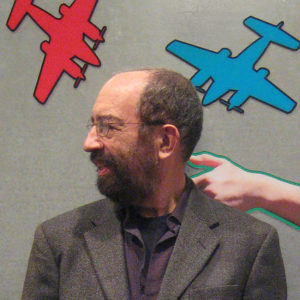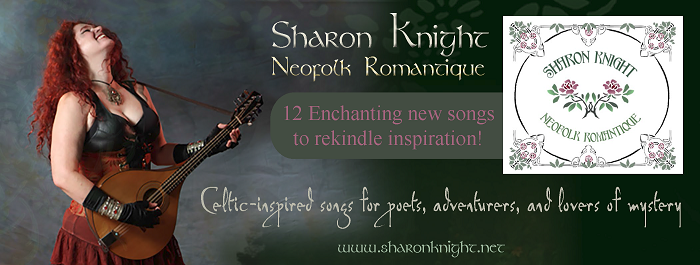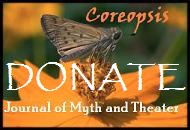
“Photographs of Things That Look Like Art”, Interview with Victor Landweber, Photographer
View Gallery
Victor Landweber Interviewed by Coreopsis
Coreopsis Journal: Please introduce yourself
VL: My name is Victor Landweber. I’m a photographic artist.
Coreopsis Journal: How would you describe your art to people who haven’t seen it before?
VL: The pictures in this publication are from a project called “Things That Look Like Art.” I photograph found subjects that present themselves with the uncanny quality of authentic artworks. I intend these pictures to represent a certain purity of vision about having an art-like encounter when no acknowledged art is present.
Coreopsis Journal: What do you feel are the most important influences in your art?
VL: First is the art I’ve seen in museums, publications and galleries. Then certain photographers whose pictures seem related to my idea about things that look like art: Edward Weston’s photographs of vegetables; Walker Evans’ photographs of tools; Frederick Sommer’s pictures of objects discovered on his walks; Aaron Siskind’s abstractions; Irving Penn’s photographs of street debris. Although these photographers didn’t necessarily speak about their pictures as I do, their photographs of mundane subjects demonstrate how a photographer can apply a personal vision about the appearance of art to his photography.
Coreopsis Journal: What do you have to say to other photographers?
VL: I’d like to invite other photographers to do something similar— to make photographs that communicate a personal vision about art so as to begin a visual dialog. In fact this seems to be one of the natural pursuits of photography. I am fascinated by other photographers’ pictures of seemingly art-like subjects, and when I show my work, people tell me about their photographs that look like art.
Coreopsis Journal: So what distinguishes your work?
VL: First off, when I call this project “Things That Look Like Art,” in a sense, I’m giving away the game. Anyone can do this and many have. The challenge is to make superb photographs that have the uncanny power of artworks in their own right.
Coreopsis Journal: Would you elaborate on what you mean by “uncanny”?
VL: I experience something as “uncanny” when it seems to have an existence beyond its natural presence and value. An uncanny subject is like a gift from a parallel universe. It is uncanny that ordinary subjects can be elevated by the process of observation and photography.
Coreopsis Journal: Your pictures are very painterly in a lot of ways.
VL: Well, they’re meant to look like art and in some cases like paintings. I want them not only to look like art but to have the insight, power and mystery of genuine artworks. I want them to lend themselves to deeper thought and to suggest ideas that are outside and beyond themselves.
Coreopsis Journal: Coreopsis addresses questions of the spirit, and this particular issue is about myth making and mythopoetics. Often that’s interpreted as encountering the fantastic in a transformative way. Would you like to talk about how your art addresses the theme of the issue?
VL: My thinking about the idea of myth has to do with the power of a photograph to represent something that is unknowable but is nevertheless presented as something you can know. I selected these photographs because I feel them most aligned with that idea.
Coreopsis Journal: In past issues we’ve asked questions about the relationship of art and craft. Would you speak about how craft figures in your photography?
VL: As a photographer I’m concerned with the fine print and presentation. I can spend days working on a single image, printing full-size tests, honing tonal values, making as fine a print as I can. It’s paradoxical that the goal of the process is to make the craft invisible, to make it appear as if I had done nothing at all.
Coreopsis Journal: I want to ask you about your photographs. In this one a face has been carved into a tree stump. It reminds me of the Iroquois who carved masks into living trees. They’d make them over a long period of time so you can see them in various states of completion. They’d use them once and then give them back to the forest.
VL: I have no idea who carved the stump or how it came to be. It’s in a traffic pullout near my home in Berkeley. I looked at it again today and saw that it is in a state of advanced decay. I think of it as a primeval relic, as if it had been left by some ancient people who used to live here. Is it an artwork? I’ve certainly photographed it as if it is.
Some other pictures in this portfolio: the one of the truck, photographed through a window, that seems infused with electricity—I think of it as being about male desire for a coveted object. The one of the streak of light on the sidewalk is particularly magical. It’s as if the light had fallen out of the sleeve of the mysterious passer-by and landed on the pavement where little sparkles have become stuck.
Coreopsis Journal: I think that more than many of the other arts, photography is very good at pointing out the beauty of the ordinary.
VL: Well, we’re all photographers these days. “Things That Look Like Art” is very much about pointing out the possibility of making something extraordinary out of ordinary experience. It indicates the potential of a certain way of thinking about the process of making photographs.
Coreopsis Journal: “The process of making photographs”— we don’t use darkrooms anymore. Tell me about your process.
VL: It’s digital. It’s in color. The photographs are made with a small camera that I carry all the time, mostly used at the wide end of the zoom range. I’m very particular about my subjects and can go weeks without photographing. I use Photoshop as I used to use a darkroom though with far greater flexibility and control. I make my prints using a large ink jet printer. I make a lot of trial prints before I’m satisfied enough to print a small edition. Prints are 18″x24″, made with stable inks on glossy paper.
Coreopsis Journal: Do you have any final words that you would like to say to all of us out here in the world doing our art?
VL: No. I do not have final words. I’m engaged in a process, and so there is no destination and no finality. It’s about continuing to engage in the process.
Coreopsis Journal: Well that’s something in and of itself.
Victor Landweber’s photography may be seen at the following gallery shows:
A one-artist show of fifteen “American Cameras” photographs, July 26, to August 30, 2014, opening reception July 26, at: Joseph Bellows Gallery 7661 Girard Ave La Jolla, CA 92037
A group show that includes nine “Auduboniana” photo-collages running from April to July, 2015, at: Norton Simon Museum of Art 411 W Colorado Blvd Pasadena, CA 91105
 Since encountering the art of the late 1960s and early 70s at the old Pasadena Art Museum, I’ve wanted to apply what I could learn from looking at and thinking about art to my personal photographic projects. In 1976 I completed graduate studies at UCLA where I worked with painters even though my medium was exclusively photography. I think of my studio photographs from the mid-70s to early 80s as a kind of later-day pictorialism. Like the turn-of-the-Twentieth Century Pictorialists, I modeled my photographs after paintings—in their case sentimental Impressionism, in my case Post-painterly Abstraction, Minimalist and Pop art.
Since encountering the art of the late 1960s and early 70s at the old Pasadena Art Museum, I’ve wanted to apply what I could learn from looking at and thinking about art to my personal photographic projects. In 1976 I completed graduate studies at UCLA where I worked with painters even though my medium was exclusively photography. I think of my studio photographs from the mid-70s to early 80s as a kind of later-day pictorialism. Like the turn-of-the-Twentieth Century Pictorialists, I modeled my photographs after paintings—in their case sentimental Impressionism, in my case Post-painterly Abstraction, Minimalist and Pop art.
In the late 1970s and early 80s I carried a small camera and photographed in color in Los Angeles. Although I didn’t speak of it this way at the time, I sought out subjects that I could photograph as if works of art. I now think of these color photographs as prologue to my current project, “Things That Look Like Art.”
After a hiatus, my enthusiasm for photography was restored by a combination of digital technology and wanting to photograph certain artworks. First was a digital collage project for which I placed Audubon’s pre-photographic birds into my photographs of post-industrial architecture; then an art-historical treatise about the network of connections among artists as defined through my photographs of artworks in which one artist refers to another.
My current work furthers and clarifies this investigation: “Things That Look Like Art” is a collection of observations of found artifacts that present themselves with the uncanny quality of authentic artworks. I want to suggest a certain purity of vision about art when an art-like experience is had although no acknowledged art is present. While not necessarily referring to specific artists or artworks, they bring to bear my experience from past projects of looking at, thinking about, and photographing works of art.
—V.L., 2013 www.victorlandweber.com


